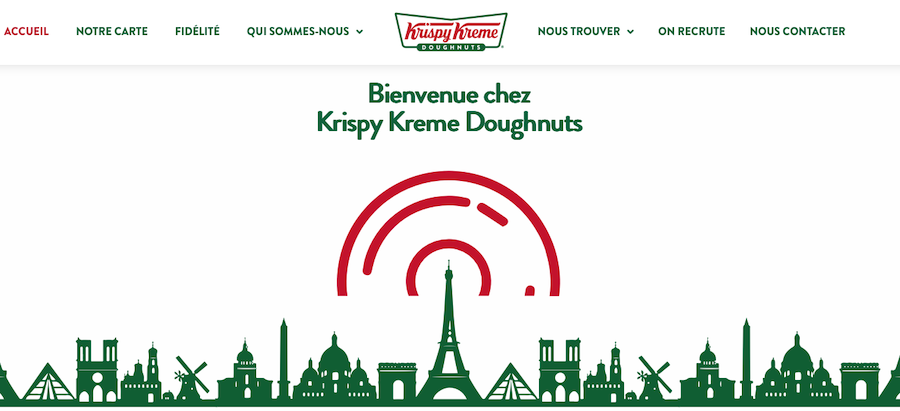
Late last year Krispy Kreme entered its 39th foreign market: France.
And it launched a localized website to match.
The company plans to open 500 stores in France over the next five years.
France is attracting a number of American fast food (junk food) chains. According to The New York Times:
In the spring, Popeye’s fried chicken drew huge crowds in Paris when it opened the first of 350 restaurants planned across France. Wendy’s has announced plans to set up shop in France. Burger King, KFC, Starbucks, Domino’s Pizza, Chipotle, Steak ’n Shake, Carl’s Jr. and Five Guys have long had toeholds, but they are rapidly expanding their footprints with plans for hundreds of new locations across the country.
Leading the pack is McDonald’s. After the United States, France is the chain’s most profitable country, with more than 6 billion euros ($6.5 billion) in sales from over 1,500 restaurants in 2022. France is also the second-biggest market for Burger King, with €1.2 billion in revenue last year.
I give Krispy Kreme credit for wisely using France’s country code: krispykreme.fr. Too few American brands get this right. Country codes matter — and, in countries like France, matter quite a lot.
Sadly, Krispy Kreme made a rookie mistake with its gateway, shown here:

Flags do not equate to languages. In this case, the website would have been better off leaving the flags off entirely. Flags actually limit geographic reach. Is the English site limited only to speakers with the UK?
Krispy Kreme, like many restaurant brands, relies on franchised country-specific franchise operations such as with France. So maintaining global consistency with the website can be challenging as you have different web teams that answer to separate owners. Nevertheless, global consistency is critical to maintaining a global, trusted brand image. And, with regards to France, the website appears slightly different than the US site seen here:

For another point of comparison, here is the semi-localized Japan website (krispykreme.jp). The color schemes are consistent, which is hugely important. But more could be done.

And there is one big advantage to using a global template — assuming the companies work together they can develop a template that incorporates a global gateway into the header (sans flags) that benefits all properties around the world. And, ultimately, doughnut aficionados as well.
PS: While Krispy Kreme is not in the 2024 Web Globalization Report Card, Starbucks, McDonald’s and many other global retailers are. Check it out!
